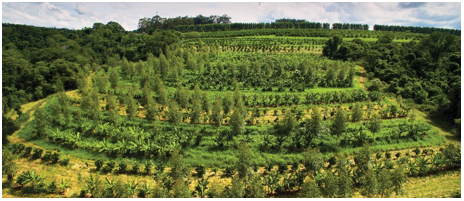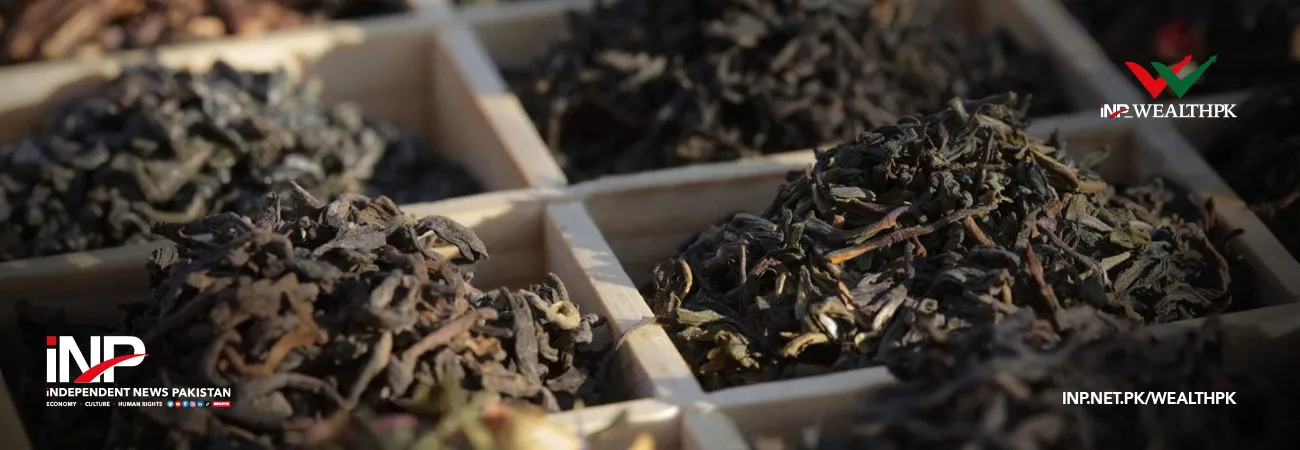INP-WealthPk
Azeem Ahmed Khan
Agroforestry, an innovative farming approach that combines agriculture and trees, is gaining recognition internationally as a powerful strategy for boosting crop productivity, enhancing soil health, and addressing climate change, said Fakhar Imam, Head of the Planning, Research, and Publication Unit & Food Security Unit of Zarai Taraqiati Bank Limited (ZTBL), in an interview with WealthPK.

Unfortunately, agroforestry remains unfamiliar to many farmers in Pakistan, and the idea of beginning without prior experience can be intimidating, he said. Since Pakistan faces double challenges of climate change and food insecurity, agroforestry can emerge as a key solution for building a sustainable and resilient agricultural system, Imam added.
“Agroforestry is not merely an agricultural technique; it is a comprehensive approach that promotes environmental health, reduces climate change impacts, ensures food security by integrating the benefits of both agriculture and forestry,” he explained. A major benefit of agroforestry is its contribution to climate change mitigation, he said. Trees capture and store carbon, which reduce atmospheric carbon levels and help to counteract global warming, he added.
Additionally, improved soil health and decreased dependence on chemical fertilizers help lower greenhouse gas emissions, he added. “This process not only helps mitigate climate change but also improves soil quality and supports long-term productivity,” Imam stressed. He emphasised the urgent need for such practices in the face of global environmental challenges.
The ZTBL official said agroforestry enhances crop yields by offering shade, protection, and improved soil quality. Trees and shrubs act as natural windbreaks, reducing soil erosion and preventing crop damage, he added. “Moreover, trees help improve soil fertility by fixing nitrogen and adding organic matter, which boosts the yields of crops like maize, beans, and lentils,” he pointed out.

Agroforestry provides farmers with multiple income sources, Imam said. In addition to staple crops, farmers can harvest timber, fruits, and non-timber products such as honey, mushrooms, and medicinal plants, offering year-round marketable goods. “This diversification greatly reduces dependency on a single crop, enhancing the financial stability of farming families,” he added.
Agroforestry systems help prevent soil erosion and compaction while promoting nutrient cycling, he said. Trees contribute by adding organic matter, improving water absorption, and stabilising the soil with their roots, he added. “These advantages result in healthier soils that support stronger crop growth and higher productivity,” he pointed out.
Agroforestry systems create diverse ecosystems that support a variety of plant and animal species, Imam said. Trees and shrubs provide shelter, food, and nesting sites for wildlife, helping to conserve biodiversity and support ecological balance, he added. Agroforestry also helps in conserving water by reducing surface runoff and enhancing water infiltration into the soil, he said.
Tree roots help retain moisture in the soil, reduce soil erosion, and improve water quality, he said, adding that trees and shrubs also lower soil surface evaporation, helping to preserve soil moisture. Trees and shrubs as natural filters in agroforestry also reduce the flow of pollutants and sediments into rivers, lakes, and groundwater, ensuring cleaner water sources vital for both farming and household needs, he added.
Agroforestry results in natural pest control by supporting a diverse range of plants, which attract different predators that feed on crop pests, Imam said. This biodiversity can reduce the need for chemical pesticides, leading to a healthier environment and safer food, he added.
Agroforestry systems provide a diverse and resilient food production model by integrating various crops, trees, and livestock, he said. This diversity ensures a continuous supply of food and reduces the risk of food shortages due to climate-related disruptions or market fluctuations, he added.
Credit: INP-WealthPk













